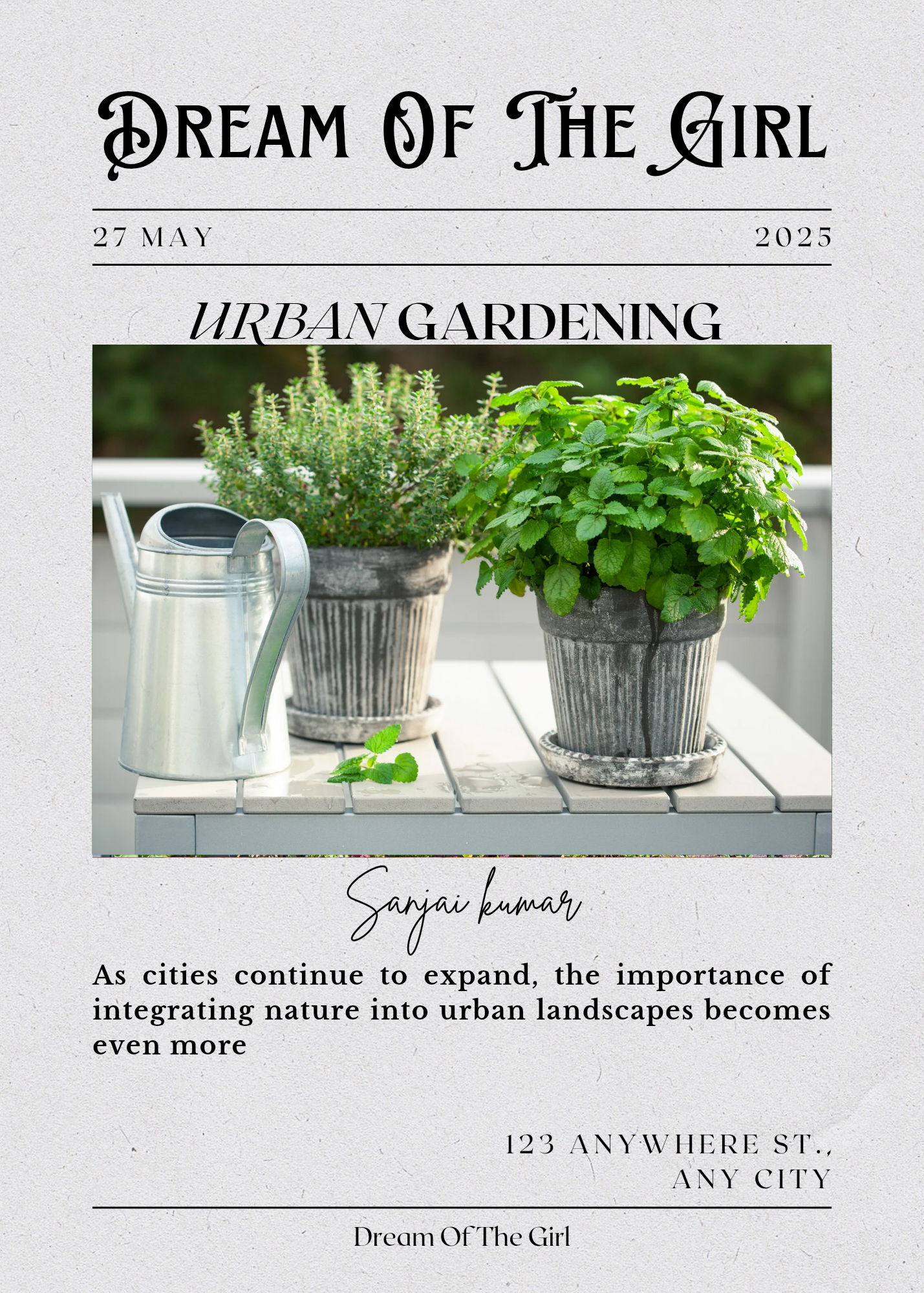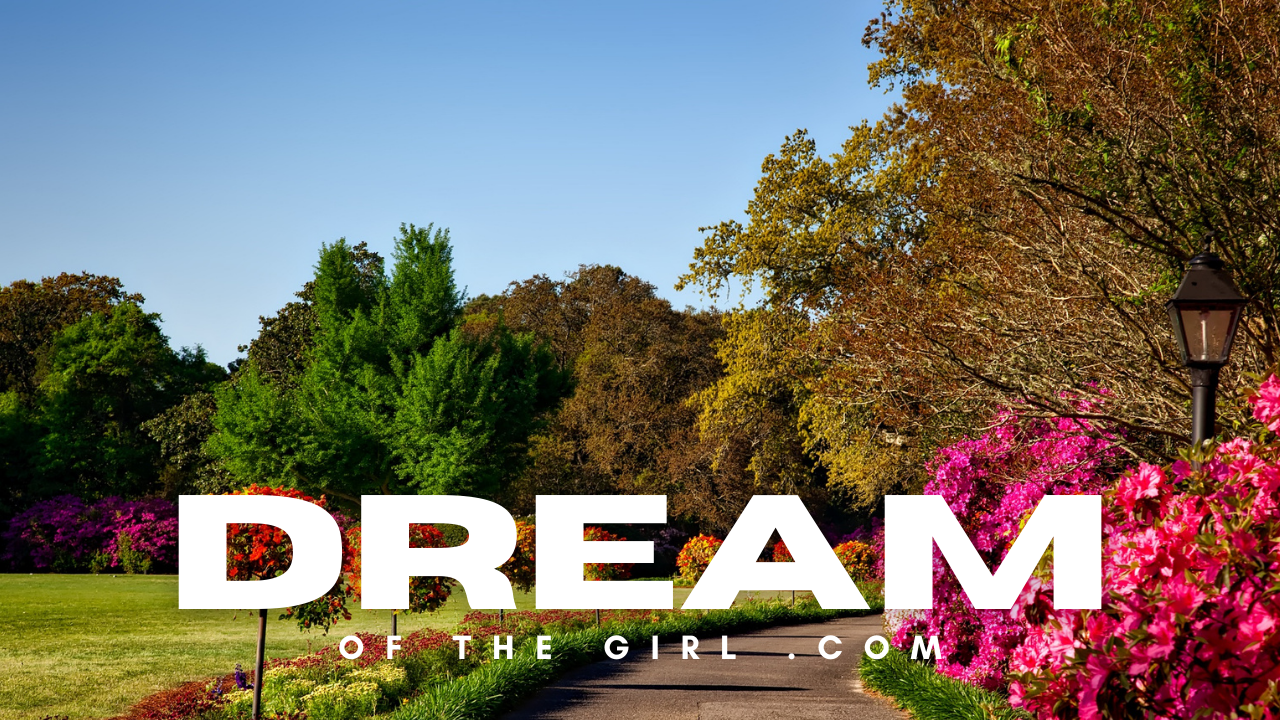Introduction
Urban gardening is transforming cities into green, self-sustaining spaces by cultivating plants, vegetables, and even small trees in limited spaces. It is a method of growing food and ornamental plants in urban areas using innovative techniques that maximize space, reduce environmental impact, and promote sustainability. Urban gardens help people reconnect with nature, enhance biodiversity, and address food security issues in metropolitan areas.
This comprehensive guide explores the meaning, characteristics, and benefits of urban gardening, along with its various aspects such as urban farming, urban horticulture, and urban forestry. Additionally, we will discuss related topics, including the differences between urban and rural living, urbanization’s impact, and the growing trend of urban sustainability.
The Dark Side of Urban Gardening Hidden Challenges No One Talks About
What is the Meaning of Urban Garden?
An urban garden is a green space created within a city or town where individuals or communities cultivate plants, flowers, herbs, and food crops. These gardens can be found on rooftops, balconies, backyards, community spaces, and even in abandoned lots.
Urban gardens serve multiple purposes, including providing fresh food, improving air quality, reducing urban heat, and fostering social interactions among city dwellers.
Types of Urban Gardens
- Rooftop Gardens – Vegetation grown on the rooftops of buildings.
- Vertical Gardens – Plants cultivated on walls or vertical structures.
- Community Gardens – Shared spaces where residents grow crops collectively.
- Container Gardens – Plants grown in pots, buckets, or repurposed containers.
- Hydroponic and Aquaponic Gardens – Soil-less gardening methods using water and fish-based systems.
- Indoor and Balcony Gardens – Small-scale gardening in apartments and limited spaces.
The Dark Side of Urban Gardening Hidden Challenges No One Talks About
Table of Contents
What are the Characteristics of Urban Gardening?
Urban gardening is distinct from traditional farming due to its location, techniques, and sustainability factors. Here are its key characteristics:
- Space Optimization – Uses rooftops, walls, small backyards, and balconies for gardening.
- Sustainability – Encourages composting, rainwater harvesting, and organic practices.
- Technology-Driven – Uses hydroponics, aquaponics, and vertical farming to maximize yield.
- Community-Oriented – Many urban gardens are shared spaces where people collaborate.
- Biodiversity Promotion – Helps support urban wildlife like bees, butterflies, and birds.
- Environmental Impact Reduction – Improves air quality and reduces the urban heat island effect.
The Dark Side of Urban Gardening Hidden Challenges No One Talks About
What is the Concept of Urban Farming?
Urban farming, also known as urban agriculture, involves cultivating food crops, livestock, and fish within cities. Unlike traditional farming, urban agriculture focuses on sustainability, resource efficiency, and integrating food production into urban lifestyles.
Types of Urban Farming
- Backyard Farming – Individuals growing food in private yards.
- Rooftop and Vertical Farming – Maximizing space for food production.
- Community Farms – Shared spaces for food cultivation.
- Aquaponics and Hydroponics – Soil-less farming techniques.
- Indoor Farming – Using controlled environments like greenhouses.
The Dark Side of Urban Gardening Hidden Challenges No One Talks About
What Plants are Best for Urban Gardening?
The best plants for urban gardens are those that thrive in limited spaces and require minimal maintenance.
Best Plants for Urban Gardening:
- Vegetables – Tomatoes, lettuce, spinach, carrots, radishes.
- Herbs – Basil, mint, rosemary, thyme, coriander.
- Fruits – Strawberries, lemons, figs, dwarf apple trees.
- Flowering Plants – Marigolds, petunias, geraniums.
- Air-Purifying Plants – Aloe vera, snake plants, peace lilies.
The Dark Side of Urban Gardening Hidden Challenges No One Talks About
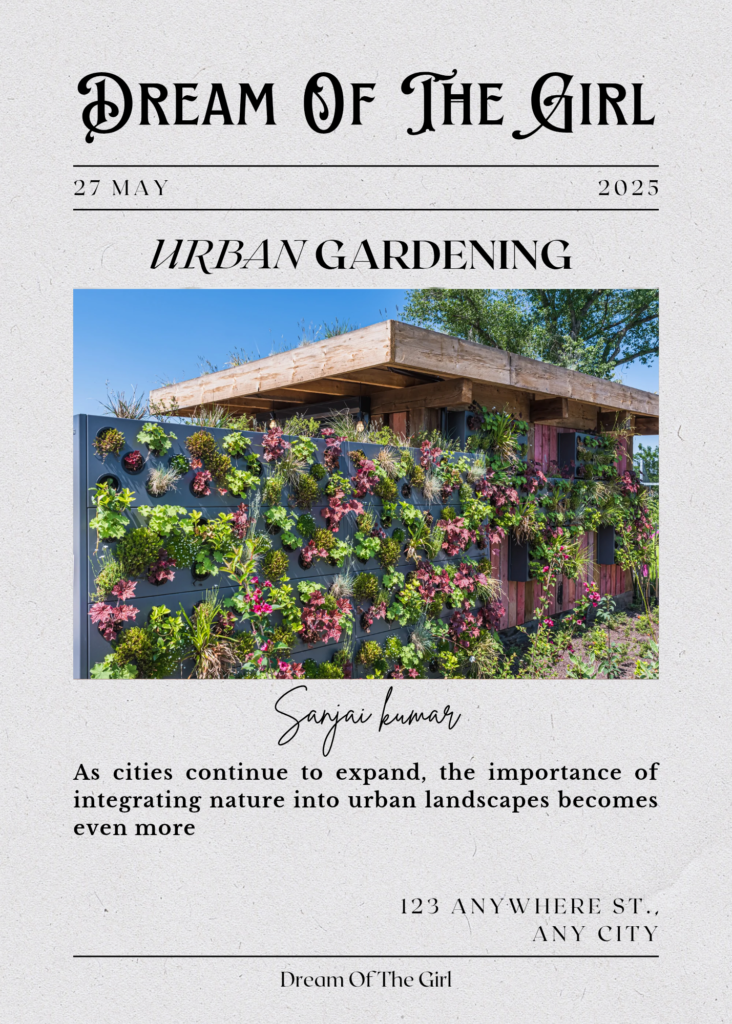
What Foods are Important to Grow in the City?
Urban food production focuses on crops that are easy to grow, provide high nutrition, and adapt well to small spaces.
Essential Foods for Urban Gardening:
- Leafy Greens – Spinach, kale, lettuce (nutrient-rich, fast-growing).
- Root Vegetables – Carrots, radishes, potatoes (require minimal space).
- Tomatoes and Peppers – High-yield, ideal for containers.
- Legumes – Beans, peas (protein-rich, nitrogen-fixing).
- Mushrooms – Can be grown indoors with minimal effort.
The Dark Side of Urban Gardening Hidden Challenges No One Talks About
What is Urban Jungle Plants?
An urban jungle refers to indoor and outdoor gardening practices that create lush, tropical environments in city spaces. People use plants with broad, vibrant foliage to enhance aesthetics and improve air quality.
Popular Urban Jungle Plants:
- Monstera
- Snake Plant
- Fiddle Leaf Fig
- Pothos
- Rubber Plant
The Dark Side of Urban Gardening Hidden Challenges No One Talks About
What are the Benefits of Urban Jungle?
- Enhances indoor air quality.
- Reduces stress and improves mental health.
- Adds aesthetic value to homes and offices.
- Helps with noise reduction in urban areas.
The Dark Side of Urban Gardening Hidden Challenges No One Talks About
What is Urban Horticulture in Botany?
Urban horticulture is the science of growing plants in cities, focusing on improving the environment, food security, and human well-being. It includes ornamental gardening, edible landscaping, and vertical farming.
The Dark Side of Urban Gardening Hidden Challenges No One Talks About
What is the Miyawaki Method?
The Miyawaki method is a reforestation technique that involves planting native trees densely to create self-sustaining forests in urban areas. This method helps restore biodiversity and combat climate change.
The Dark Side of Urban Gardening Hidden Challenges No One Talks About
Urban vs. Rural Key Differences
- Urban – High population density, modern infrastructure, limited green space.
- Rural – Low population density, agricultural focus, abundant natural landscapes.
What is Urbanization? Is it Good or Bad?
Urbanization is the process of cities expanding and more people moving from rural to urban areas.
Pros:
✔ Economic growth
✔ Technological advancements
✔ Improved healthcare and education
Cons:
✖ Overpopulation
✖ Pollution and waste management issues
✖ Loss of green spaces
The Dark Side of Urban Gardening Hidden Challenges No One Talks About

The Future of Urban Gardening Challenges and Solutions
Urban gardening is a revolutionary step toward sustainable cities, but it also faces several challenges. Overcoming these barriers requires innovation, community involvement, and government support.
Challenges of Urban Gardening
- Limited Space – Many cities lack sufficient open land for gardening.
- Soil Contamination – Urban soils may be polluted with heavy metals.
- Water Scarcity – Many cities struggle with water availability for irrigation.
- Lack of Awareness – Not everyone understands the benefits of urban gardening.
- Regulatory Barriers – Some cities have zoning laws that limit gardening activities.
Solutions for a Greener Future
✔ Vertical Gardening & Hydroponics – Maximizing production in small spaces.
✔ Soil Remediation Techniques – Using raised beds, composting, and organic soil amendments.
✔ Rainwater Harvesting & Drip Irrigation – Reducing water wastage.
✔ Community Awareness Programs – Encouraging more people to engage in urban gardening.
✔ Government Policies & Incentives – Supporting urban farming through subsidies and tax benefits.
The Dark Side of Urban Gardening Hidden Challenges No One Talks About
Urban Gardening and Climate Change
Urban gardens play a crucial role in mitigating climate change by reducing carbon emissions, lowering temperatures, and enhancing biodiversity.
How Urban Gardening Helps the Environment
- Reduces Carbon Footprint – Growing local food reduces transportation emissions.
- Combats the Urban Heat Island Effect – Plants help cool down cities.
- Enhances Air Quality – Plants absorb CO2 and pollutants.
- Supports Pollinators – Flowers and crops attract bees and butterflies, essential for biodiversity.
By implementing more urban gardens, cities can become more resilient to climate change and create healthier living environments.
The Dark Side of Urban Gardening Hidden Challenges No One Talks About
Technology in Urban Gardening
The future of urban gardening is closely linked to technological advancements. New methods are making it easier to grow food in urban environments.
Modern Technologies in Urban Gardening
✔ Smart Irrigation Systems – Automated watering based on plant needs.
✔ LED Grow Lights – Allows indoor farming without sunlight.
✔ AI and IoT Monitoring – Sensors track soil moisture, temperature, and plant health.
✔ Aeroponics & Aquaponics – Innovative soilless farming methods for maximum yield.
These technological advancements are making urban gardening more efficient, even in the most space-constrained cities.
The Dark Side of Urban Gardening Hidden Challenges No One Talks About
Social and Economic Impact of Urban Gardening
Urban gardening is more than just growing food—it also has profound social and economic benefits.
Social Benefits:
✔ Strengthens community bonds through shared spaces.
✔ Reduces stress and promotes mental well-being.
✔ Encourages physical activity and outdoor engagement.
Economic Benefits:
✔ Reduces household food expenses.
✔ Creates local job opportunities in urban farming.
✔ Promotes entrepreneurship in organic food markets.
By integrating gardening into city life, people can enjoy healthier lifestyles while boosting local economies.
The Dark Side of Urban Gardening Hidden Challenges No One Talks About
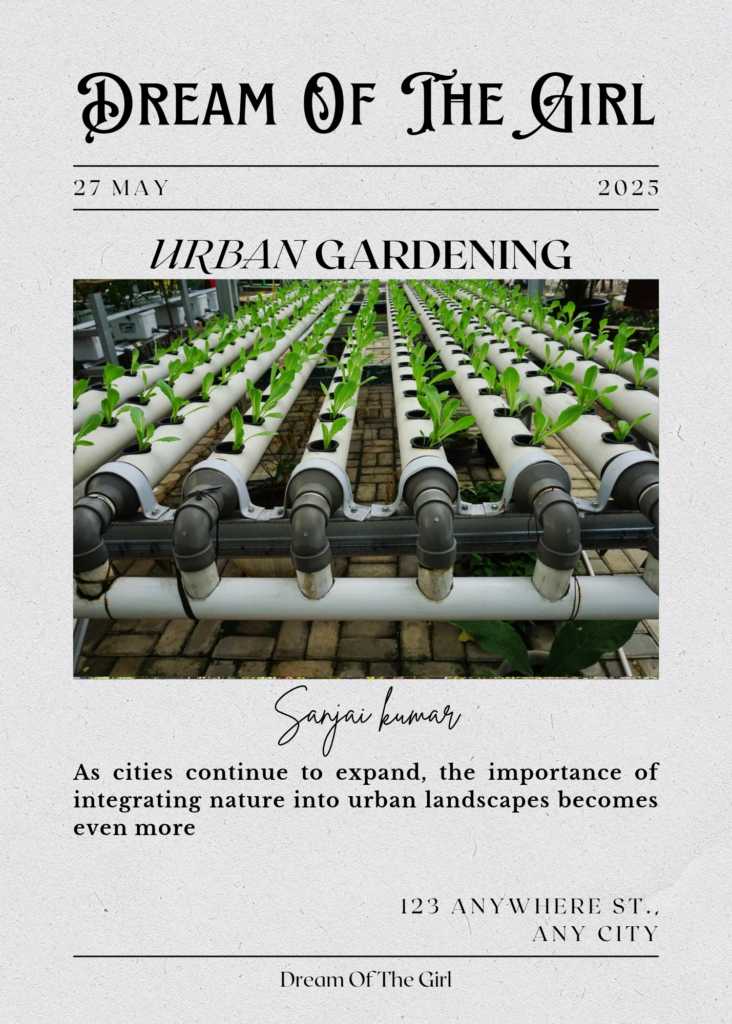
Urban Gardening as a Lifestyle
Urban gardening is not just a trend—it is a lifestyle that encourages self-sufficiency, sustainability, and well-being.
Simple Steps to Start an Urban Garden
- Choose a Suitable Space – Balcony, rooftop, windowsill, or backyard.
- Select the Right Plants – Opt for easy-to-grow vegetables and herbs.
- Use Organic Soil and Compost – Avoid chemical fertilizers and pesticides.
- Implement Efficient Watering Techniques – Drip irrigation or self-watering pots.
- Get Creative with Containers – Recycle old buckets, tins, or wooden crates.
Anyone can start an urban garden, regardless of experience or available space.
Final Thoughts The Power of Urban Gardening
Urban gardening is an essential step toward building healthier, greener, and more self-sufficient cities. It empowers individuals, strengthens communities, and contributes to a more sustainable world.
As cities continue to expand, the importance of integrating nature into urban landscapes becomes even more critical. By embracing urban gardening, we can create a future where fresh food is accessible, the environment is protected, and people reconnect with nature in their daily lives.
The Dark Side of Urban Gardening Hidden Challenges No One Talks About
Let’s start growing a better world—one plant at a time!
Urban Gardening A Global Movement
Urban gardening is no longer a niche hobby—it has become a global movement. Cities worldwide are recognizing its importance in creating sustainable urban spaces, addressing food security, and improving the quality of life for residents.
Urban Gardening Success Stories Around the World
✔ New York City, USA – The city has over 600 community gardens managed by organizations like GreenThumb, providing fresh produce to local communities.
✔ Tokyo, Japan – Rooftop gardens have become a popular trend, with companies and restaurants growing their own food to promote sustainability.
✔ Berlin, Germany – Urban farming projects like Prinzessinnengarten have transformed vacant lots into thriving green spaces.
✔ Mumbai, India – Residents have started vertical farming and terrace gardening to grow organic vegetables in limited spaces.
✔ Singapore – The city-state is pioneering high-tech urban farming techniques, such as hydroponics and aeroponics, to achieve greater food security.
The rise of urban gardening is proof that cities can integrate green solutions into everyday life, promoting a healthier and more sustainable future.
The Dark Side of Urban Gardening Hidden Challenges No One Talks About
Urban Gardening and Education
Urban gardening is also an excellent educational tool, teaching both children and adults about sustainability, nutrition, and environmental responsibility.
How Urban Gardening Benefits Education
✔ Encourages hands-on learning about biology and ecology.
✔ Teaches kids the value of sustainability and self-sufficiency.
✔ Helps students understand the importance of fresh, healthy food.
✔ Fosters teamwork and social interaction through community gardening projects.
Many schools and universities have started integrating gardening into their curriculum, inspiring the next generation to embrace eco-friendly practices.
The Dark Side of Urban Gardening Hidden Challenges No One Talks About
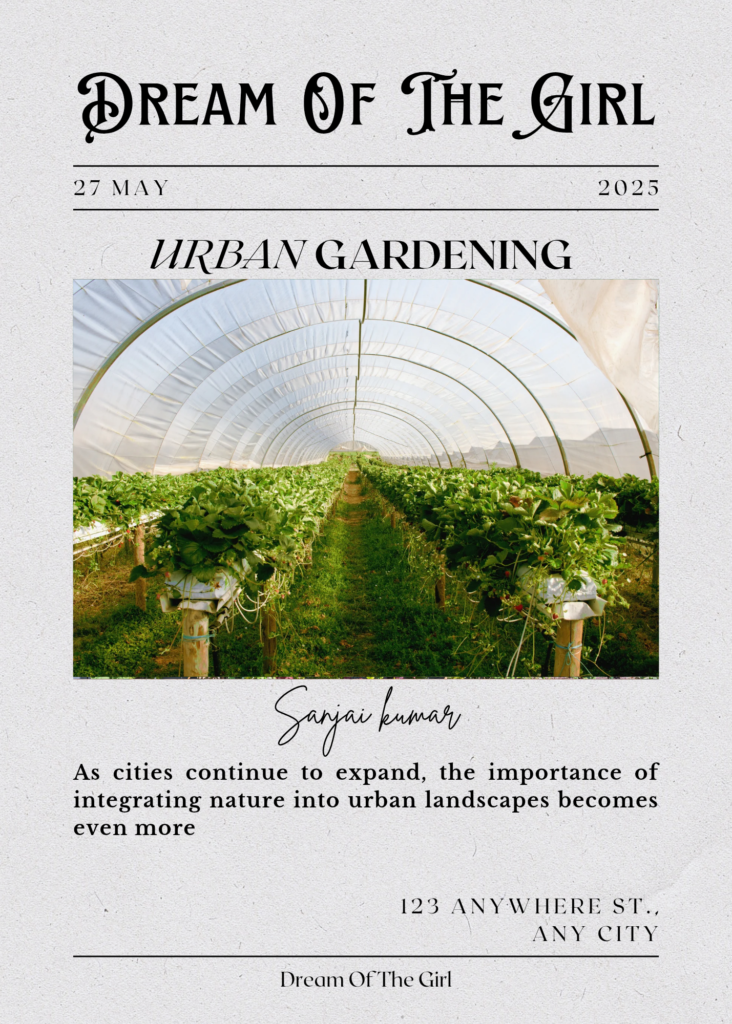
Urban Gardening and Health Benefits
Urban gardening contributes to both physical and mental well-being. Research shows that spending time in green spaces can reduce stress, improve focus, and boost overall happiness.
Physical Health Benefits
✔ Encourages healthy eating habits with homegrown food.
✔ Provides a source of organic, pesticide-free produce.
✔ Increases physical activity through planting, watering, and harvesting.
Mental Health Benefits
✔ Reduces stress, anxiety, and depression.
✔ Promotes relaxation and mindfulness.
✔ Encourages social connections through community gardens.
Engaging in urban gardening allows individuals to take control of their food sources while improving their mental and physical well-being.
The Dark Side of Urban Gardening Hidden Challenges No One Talks About
Urban Gardening and the Future of Sustainable Cities
With the global population rapidly increasing, cities must adapt to ensure food security and environmental sustainability. Urban gardening is one of the key solutions for building resilient, self-sufficient communities.
How Cities Can Support Urban Gardening
✔ Green Infrastructure Policies – Encourage rooftop and vertical gardens in new building projects.
✔ Urban Farming Grants – Provide financial support for individuals and organizations starting urban farms.
✔ Public Green Spaces – Convert vacant lots into community gardens.
✔ Educational Programs – Teach residents about sustainable gardening practices.
✔ Recycling and Composting Initiatives – Promote waste reduction through organic composting.
Cities that embrace urban gardening will be better equipped to handle future challenges such as climate change, food shortages, and environmental degradation.
The Dark Side of Urban Gardening Hidden Challenges No One Talks About
How You Can Get Involved in Urban Gardening
Anyone, regardless of space or experience, can start an urban garden. Here are some practical steps to begin your journey:
Beginner’s Guide to Urban Gardening
✔ Start Small – Begin with a few pots of herbs or vegetables on your balcony or windowsill.
✔ Choose Easy-to-Grow Plants – Basil, mint, lettuce, and cherry tomatoes are great for beginners.
✔ Use Vertical Space – Hanging planters, trellises, and shelves can maximize small areas.
✔ Practice Sustainable Gardening – Use organic compost, collect rainwater, and avoid chemical pesticides.
✔ Join a Community Garden – Connect with others to share knowledge and resources.
Urban gardening is a rewarding practice that can bring joy, health, and sustainability to city life.
The Dark Side of Urban Gardening Hidden Challenges No One Talks About

Conclusion.The Future is Green
Urban gardening is more than just planting seeds—it is a movement toward healthier, greener, and more self-sufficient cities. By transforming rooftops, balconies, and vacant lots into thriving gardens, we can reduce pollution, enhance biodiversity, and provide fresh, organic food to urban populations.
As the world faces growing environmental and food security challenges, urban gardening stands as a powerful solution. Whether you are an individual gardener or part of a larger community effort, every small green space contributes to a better future.
So, take the first step today—start growing, start learning, and be a part of the urban gardening revolution!
Challenges and Misconceptions of Urban Gardening
While urban gardening is a powerful movement for sustainability and food security, it is not without its challenges. Many people start urban gardens expecting instant results, only to face difficulties they weren’t prepared for. Addressing these issues is key to ensuring long-term success.
The Dark Side of Urban Gardening Hidden Challenges No One Talks About
1. Limited Space and Soil Quality Issues
One of the biggest problems with urban gardening is the lack of space. Unlike rural farms, cities have minimal open land, making it difficult to grow a variety of crops. Additionally, soil in urban areas is often contaminated with pollutants, heavy metals, or chemicals that can make it unsafe for food production.
Solutions:
✔ Use raised garden beds and containers with fresh, organic soil.
✔ Test soil quality before planting and use soil remediation techniques if needed.
✔ Opt for vertical gardening, rooftop farming, or hydroponics to maximize space.
The Dark Side of Urban Gardening Hidden Challenges No One Talks About
2. Water Scarcity and Irrigation Problems
Water is a crucial factor in any form of gardening. Many urban areas face water shortages, making irrigation challenging. Improper watering techniques can also lead to water wastage or plant dehydration.
Solutions:
✔ Install rainwater harvesting systems to collect and store water.
✔ Use drip irrigation or self-watering planters to conserve water.
✔ Grow drought-resistant plants that require less water.
3. Pests and Pollution in the City Environment
Urban gardens often struggle with pests such as aphids, whiteflies, and rodents, especially in areas with improper waste management. Additionally, city pollution, including air and noise pollution, can negatively impact plant health.
Solutions:
✔ Use organic pest control methods such as neem oil, companion planting, and beneficial insects.
✔ Place plants in locations with good air circulation to minimize pollution damage.
✔ Wash produce thoroughly to remove dust and pollutants before consumption.
The Dark Side of Urban Gardening Hidden Challenges No One Talks About
The Dark Side of Urban Gardening Hidden Challenges No One Talks About
4. Lack of Awareness and Community Support
Many people in urban areas are unfamiliar with gardening or lack access to educational resources. Additionally, some landlords and city regulations discourage gardening activities, making it harder for communities to adopt the practice.
Solutions:
✔ Advocate for urban gardening policies and seek government support.
✔ Educate communities through workshops, social media, and gardening events.
✔ Form community gardening groups to share knowledge and resources.
The Dark Side of Urban Gardening Hidden Challenges No One Talks About

The Psychological and Social Impact of Urban Gardening
Beyond the physical benefits, urban gardening also has a deep psychological and social impact. In a world dominated by technology and fast-paced city life, having green spaces can significantly improve mental health and community relationships.
Mental Health Benefits of Urban Gardening:
✔ Reduces Stress and Anxiety – Engaging with plants has a calming effect, lowering cortisol levels.
✔ Increases Happiness – The act of nurturing plants and seeing them grow brings a sense of accomplishment.
✔ Promotes Mindfulness – Gardening encourages people to slow down and focus on the present moment.
✔ Combats Depression – Spending time in nature has been proven to improve mood and emotional well-being.
The Dark Side of Urban Gardening Hidden Challenges No One Talks About
The Dark Side of Urban Gardening Hidden Challenges No One Talks About
Social Benefits of Urban Gardening:
✔ Strengthens Community Bonds – People come together to share gardening spaces and exchange knowledge.
✔ Encourages Food Sharing – Community gardens often distribute fresh produce to those in need.
✔ Creates Greener Neighborhoods – More plants in urban areas improve aesthetics and air quality.
✔ Educates Children and Adults – Urban gardens serve as living classrooms, teaching sustainability and nutrition.
The Dark Side of Urban Gardening Hidden Challenges No One Talks About
The Dark Side of Urban Gardening Hidden Challenges No One Talks About
How Urban Gardening Can Transform the Economy
Urban gardening is not just about growing plants—it can also play a major role in local economies. With increasing interest in organic and locally grown food, urban gardens are opening up new opportunities for businesses and individuals.
Economic Benefits of Urban Gardening:
✔ Reduces Grocery Bills – Homegrown food cuts down on supermarket expenses.
✔ Encourages Entrepreneurship – Many people start small businesses selling organic produce, herbs, or homemade plant-based products.
✔ Creates Job Opportunities – Urban farming initiatives generate employment in agriculture, landscaping, and environmental management.
✔ Supports Local Markets – Farmers’ markets benefit from fresh, local produce, reducing reliance on imported goods.
In cities where food prices are rising, urban gardens can serve as an affordable and sustainable solution for fresh, nutritious food.
The Dark Side of Urban Gardening Hidden Challenges No One Talks About
The Dark Side of Urban Gardening Hidden Challenges No One Talks About
The Future of Urban Gardening Trends and Innovations
The urban gardening movement is constantly evolving, incorporating new technologies and sustainability practices to make city farming more efficient.
Emerging Trends in Urban Gardening:
✔ Smart Gardening – AI-powered sensors that monitor soil moisture, plant health, and optimal growing conditions.
✔ Vertical Farming – Using wall-mounted planters and hydroponic towers to maximize space.
✔ Aquaponics and Hydroponics – Growing plants without soil, using nutrient-rich water.
✔ Indoor Farming – Advanced LED grow lights allow plants to thrive indoors year-round.
✔ Permaculture and Zero-Waste Gardening – Sustainable practices that eliminate waste and maximize productivity.
With these innovations, urban gardening will continue to grow as a viable and necessary part of modern city life.
The Dark Side of Urban Gardening Hidden Challenges No One Talks About
The Dark Side of Urban Gardening Hidden Challenges No One Talks About
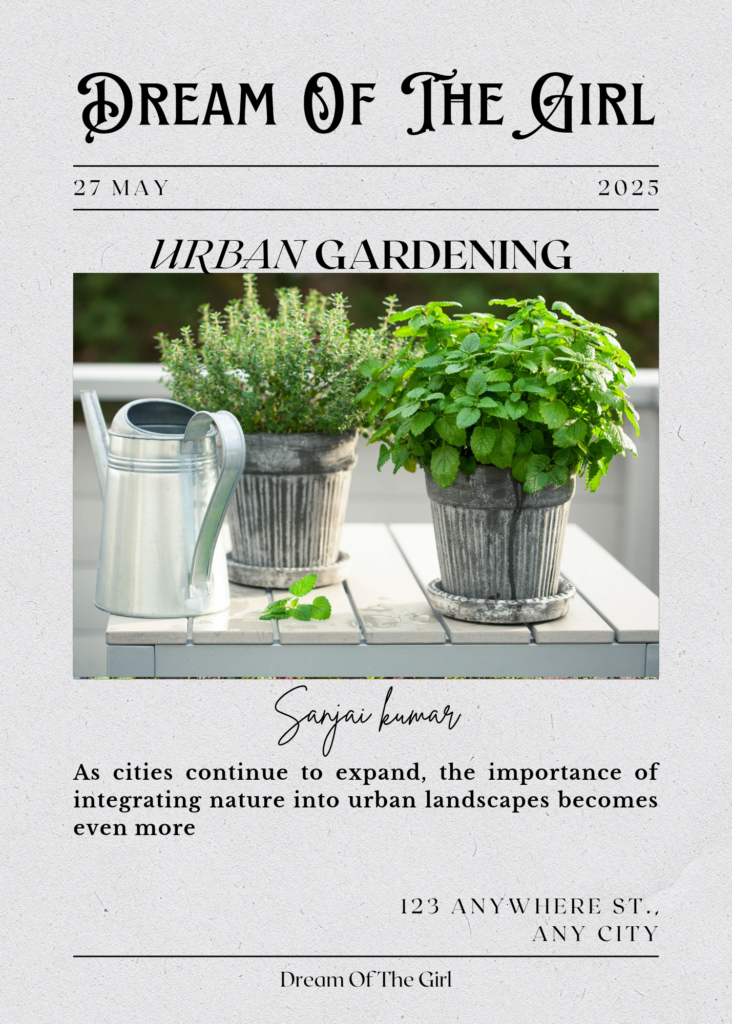
Final Call to Action Start Your Urban Garden Today!
Urban gardening is a movement that empowers individuals, strengthens communities, and helps cities become more sustainable. Whether you have a small balcony or access to a community garden, you can start today!
Simple Steps to Get Started:
✔ Find Your Space – Use your balcony, rooftop, or backyard.
✔ Choose the Right Plants – Opt for easy-to-grow herbs, vegetables, or air-purifying plants.
✔ Use Sustainable Methods – Compost, save water, and avoid chemical pesticides.
✔ Join a Gardening Community – Connect with others who share your passion.
By growing even a small amount of food, you contribute to a greener future. The power of urban gardening lies in its ability to transform not just cities, but also the lives of the people within them.
The Dark Side of Urban Gardening Hidden Challenges No One Talks About
Start today—your journey to a greener, healthier, and more sustainable city begins with just one plant!
The Dark Side of Urban Gardening Hidden Challenges No One Talks About
The Dark Side of Urban Gardening Hidden Challenges No One Talks About






